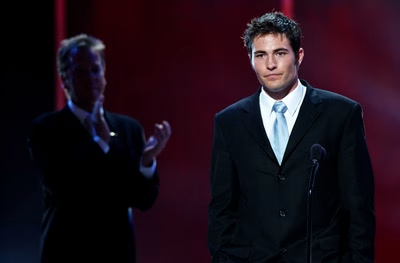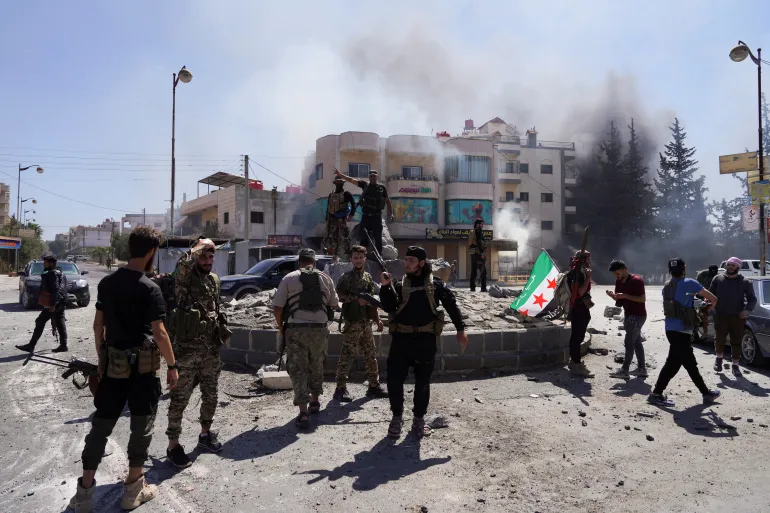In the grand narrative of American heroism, Pat Tillman’s story looms large: an NFL star who left fame and fortune behind to serve in the U.S. Army after 9/11, only to be killed in Afghanistan. His death was originally cast in the spotlight of heroism—a man who died bravely in combat. But the truth, as it turned out, was far more complex and painful. Pat Tillman died by friendly fire, and the government’s initial misrepresentation of the event ignited a quiet fury within one person in particular: his younger brother, Richard Tillman.
While Pat was immortalized in statues, murals, and emotional halftime tributes, Richard emerged not as a symbol, but as a question mark—a challenge to the narrative, a raw voice reminding the world that truth matters more than myth. In a culture addicted to manufactured stories of valor, Richard Tillman stood alone on a different kind of frontline: the fight for truth.
A Funeral Without Facade
At Pat Tillman’s nationally televised memorial service, many expected a somber but patriotic celebration. What they got instead was Richard Tillman walking up to the podium, drink in hand, eyes full of pain and anger. His message was stark, real, and far from the sanitized speeches that came before his. He famously ended with, “He’s not with God. He’s fucking dead. He’s not religious.” It was a moment of uncomfortable honesty—and it shook the room.
That single act signaled what would become Richard’s public stance: he would not allow his brother to be turned into a political football or used as a recruitment poster for wars that Pat himself questioned. Where others offered platitudes, Richard gave the truth.
The Government’s Myth-Making
Initially, Pat Tillman’s death was reported as a result of enemy fire during a firefight with Taliban forces. For five weeks, this story held the line, inspiring headlines and TV segments across the country. But as more details surfaced, the truth emerged: Pat had died due to friendly fire—shot by his own men in the confusion of battle.
Richard Tillman, along with the rest of the Tillman family, was devastated not just by Pat’s death, but by the deliberate distortion of it. It wasn’t just a misunderstanding—it was a calculated public relations move. Military documents later revealed a conscious effort to delay the release of the truth, ensuring that Pat’s death could be used for maximum patriotic effect.
Richard Tillman’s response was clear: he would not play along.
Speaking Truth to Power
Richard’s outspokenness has taken him everywhere—from congressional hearings to interviews with major networks. In 2007, he testified before Congress, where he delivered a pointed, emotionally charged condemnation of the Pentagon’s handling of Pat’s death.
He didn’t pull punches. He accused the government of lying not only to his family, but to the American public. He pointed to a culture within the military that seemed more interested in shaping perception than acknowledging failure. His central message: honesty should never be sacrificed for optics.
In a time when patriotism was often synonymous with silence, Richard Tillman brought noise. And that made a lot of people uncomfortable—including politicians and military officials who hoped the controversy would quietly fade.
A Brother First, A Voice Always
Richard Tillman has repeatedly made one thing clear: his activism was never about politics. It was personal. It was about his brother. Pat wasn’t a saint, he wasn’t a symbol—he was a man. And Richard didn’t want his memory hijacked by any agenda, whether liberal or conservative.
This position has put him in an unusual spot—both revered and criticized. Some admire his bravery and honesty, others accuse him of undermining the military’s image. But Richard never asked to become a spokesperson. He just refused to lie.
The Cost of Candor
It would be naïve to think Richard’s stance came without consequences. In a country that lionizes its fallen soldiers, questioning the official story—especially as the brother of the fallen—is like walking a tightrope with no safety net. He has faced backlash, vitriol, and pressure to be quiet.
Yet, almost two decades after Pat’s death, Richard Tillman still hasn’t gone silent. And that’s something to admire.
His story is more than a footnote in the Tillman saga. It’s a lens through which we must re-examine how we honor the dead. Do we preserve their humanity, or do we sanitize them into tools of narrative control? Richard’s voice reminds us that the most patriotic act isn’t just waving a flag—it’s demanding that we tell the truth, no matter how hard it is to hear.
The Legacy That Matters
In the end, the story of Pat Tillman is incomplete without Richard’s truth. While statues and stadiums commemorate Pat’s sacrifice, Richard protects his essence. He defends his brother not with weapons, but with honesty.
He forces us to confront an uncomfortable reality: heroism is not just about sacrifice—it’s about what happens after. How we tell the story. Who gets to tell it. And whether or not we’re brave enough to face the truth behind the image.
Richard Tillman may never wear a uniform, never grace a postage stamp, never have a holiday in his name. But he’s done something just as important—he’s reminded us that behind every hero is a human. And behind every tragedy is a story worth telling right.
Zoe For Naow.




